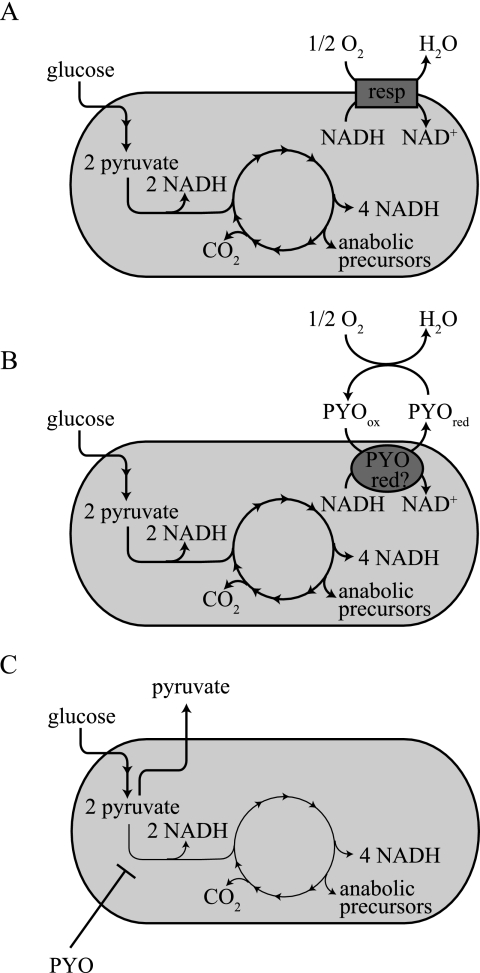FIG. 7.
Model for how pyocyanin reduction allows P. aeruginosa PA14 to maintain redox homeostasis under oxygen-limited conditions. When sufficient oxygen is available for growth (A), the aerobic respiratory chain (“resp”) can catalyze the reoxidation of NADH. Under conditions in which terminal electron acceptors for respiration are limiting (B), P. aeruginosa can couple the reoxidation of NADH to the reduction of pyocyanin, either directly or through an enzyme-mediated reaction as represented by “PYO red,” a putative phenazine reductase. The electrons could be transferred from pyocyanin to oxygen through an abiotic extracellular reaction. (C) Also under conditions of oxygen limitation, the NADH/NAD+ ratio could be balanced through inactivation of the pyruvate dehydrogenase complex by pyocyanin. NAD+ reduction (and therefore NADH production) would be avoided because pyruvate would be excreted without further oxidation. PYO, pyocyanin.

